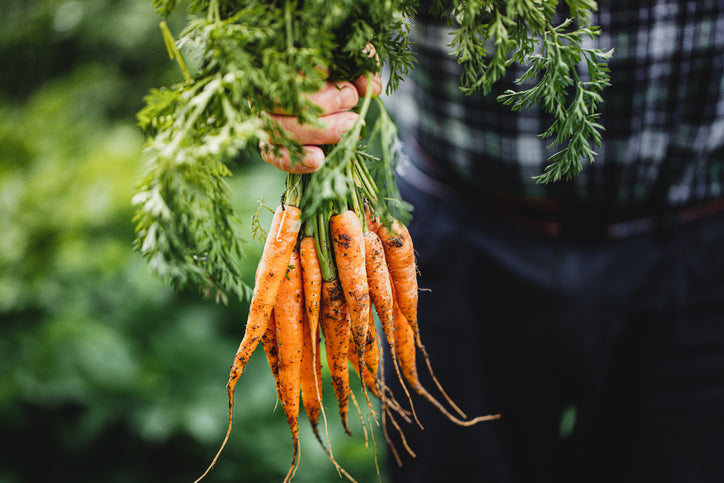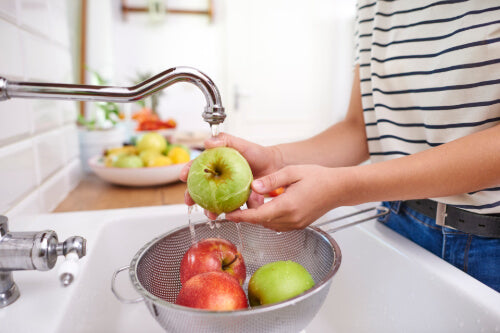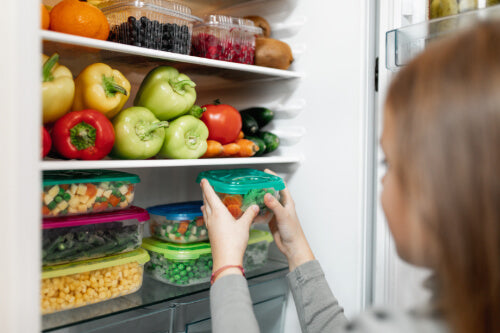Jesus declared, “I am the Way, the Truth, and the Life.” Jesus promised to give His followers abundant life—“You shall know the Truth and the Truth shall set you free…If the Son sets you free, you are free indeed.” While much of that promised freedom is spiritual freedom from the guilt and power of sin, there is also freedom found in following truth in all aspects of living. Knowing the truth about what food is healthy, such as 100% organic, non-GMO, unprocessed, natural, and pesticide-free fruits and vegetables, can bring more freedom to us, so that we can enjoy the level of health that our Creator intended for us to enjoy. All-natural foods are perfectly tailored to give us far more vitamins, minerals, and nutrients for our bodies to work as they were created to work. Packed full of live enzymes, the Hallelujah Diet can help you transform your body into something better, brighter, and healthier than ever.
But, navigating the world of food alone, especially when you might be taking your first steps away from overprocessed foods to natural—can be confusing and overwhelming. It can be done! However, it does take more effort. But as you know, taking those first steps to a better lifestyle is worth it! Shady label practices are still standard, and there are still severe flaws in the U.S. Department of Agriculture's organic certification process. Short of growing your own food or visiting the producer in person—it's challenging to know whether the fruits and vegetables or ingredients you purchase are genuinely grown in an organic, sustainable, pesticide-free, and non-GMO way.
Have you ever wondered how to recognize whether an ingredient is processed? Is the produce you're about to purchase with the green-and-white USDA organic seal genuinely organic?
Let's help you answer these questions!
How to Ensure Your Produce is Genuinely Organic
1. Find reliable lists by health groups.
Research and find lists by reliable watchdog groups. For example:
• The Cornucopia Institute is a nonprofit group that rates U.S. farms and manufacturers of items and cereal, eggs, and dairy.
• The USDA has an Organic Integrity Database that will allow you to look up a company's organic certification.
• The Environmental Working Group, a nonprofit research and advocacy organization, ranks fruits and vegetables on the amount of pesticide residue left after proper washing and preparation. Strawberries, for example, are highly susceptible to pests and are one of the most heavily sprayed with pesticides that can't be peeled or washed away, either.
2. Try to Buy Local
If possible, one of the best options is to buy food grown close to home, preferably via a farmer's market or even a Community Supported Agriculture program. Buying from small local markets allows you to build a relationship and trust with the sellers of produce and food you buy. You can usually talk to farmers and their employees to learn about their operations. Ask them to explain how they keep pests and weeds out of their crops.
3. Take a Look at What Country it Comes From
Buying from a farmer next door might not be possible, so another way to find out if something is truly organic is to note what country it comes from or was grown in. Items grown in the United States tend to source from locally grown food, although the definition of local can vary. The U.S. supply chain generally has fewer opportunities for fraud than imports.
Even genuinely organic food from other countries can become tainted at entry ports if customs detect pests in the shipment.
Avoiding imported items is also very challenging, especially if you enjoy avocados and olive oil. Rather than relying fully on USDA labeling, you can always do some research.
Peter Lauder, author of Organic: A Journalist's Quest to Discover the Truth Behind Food Labeling, keeps a bag from a package of organic frozen berries purchased from a large chain grocery store on the wall of his office at the University of Oregon, where he teaches journalism.
"It's got the USDA organic stamp on it, and in the fine print, it says, 'Product of Serbia and Argentina," Laufer said. So it is crucial to not only research but also read the fine print.
What else can you do to ensure your food is organic?
1. Read all organic product labels.
2. Check the PLU Code on produce. PLU codes are the numbers on stickers that are used to identify the produce during checkout. Organic PLUs have a 5-digit number that starts with the number 9. Non-organic produce has a 4-digit PLU that starts with 4.
3. Look closely at any product labeled natural or free-range or similar language that could be confused for organic. Sometimes a company will use eco-friendly or organic terms on their packaging of non-organic products. This is called "greenwashing."
Processed Foods
There are so many processed foods. So, what ingredients should you recognize in ultra-processed food to know what to stay away from?
Typically, ultra-processed foods will contain substances we don't usually use in our kitchen or food prep, such as:
• Hydrolyzed proteins
• Modified starches
• Hydrogenated oils
• Colorants
• Flavorings
• High fructose corn syrup
• Artificial sweeteners
• Bulking agents
Other indicators that the product you have is ultra-processed are:
• High in calories. For example, a 100-gram serving of potato chips generally contains 545 calories. Compare that to a plain, baked potato serving that has only 95 calories.
• Sugar content. Sweet ultra-processed foods will be very high in added sugars. For example, a brand-name cereal targeted at children might contain 16 grams of added sugar per cup. Meanwhile, a breakfast of rolled oats and fresh berries with natural peanut butter contains 0 grams of added sugar.
Ultra-processed foods also tend to be:
• Low in fiber
• Low in protein
• Deficient in vitamins and minerals
• Higher in salt
• Higher in fat
Additionally, keep an eye out for foods marketed at your local grocery store as "diet," "lite," or "low-fat." When commercial food manufacturers remove fat from a product they commonly turn to sugar, additives, colors, flavorings, thickeners, fillers, and artificial sweeteners to make up for the missing fat.
Shopping for pure foods and real organics can be confusing. Companies that use greenwashing tactics, fake green labels, hidden ingredients, and more can make it a challenge to navigate your raw food diet. At Hallelujah Diet, we're here to make your first step or your hundredth step toward eating better and healthier accessible. We hope we've shed some light on the truth of how to find genuinely organic food and how to recognize processed ingredients.








